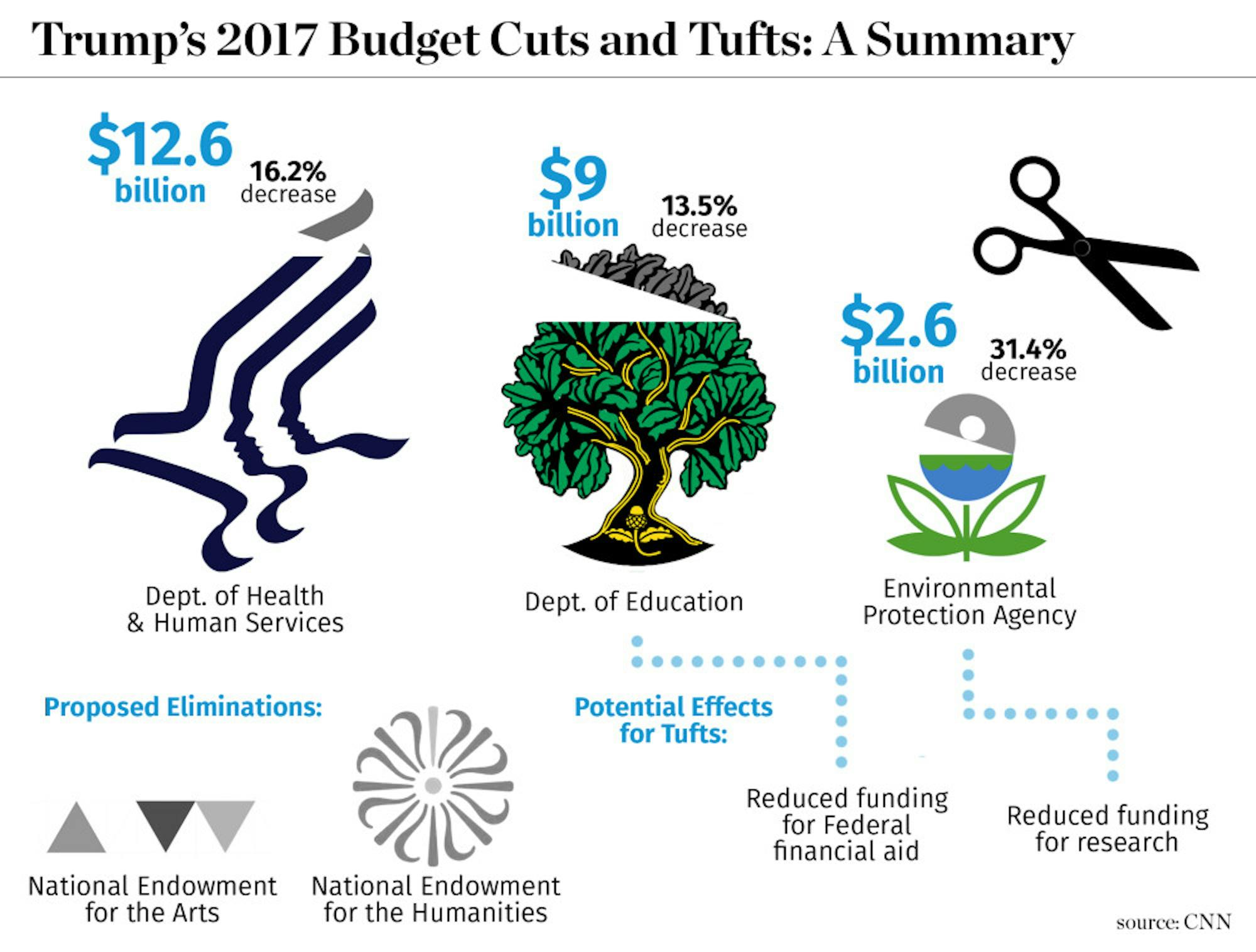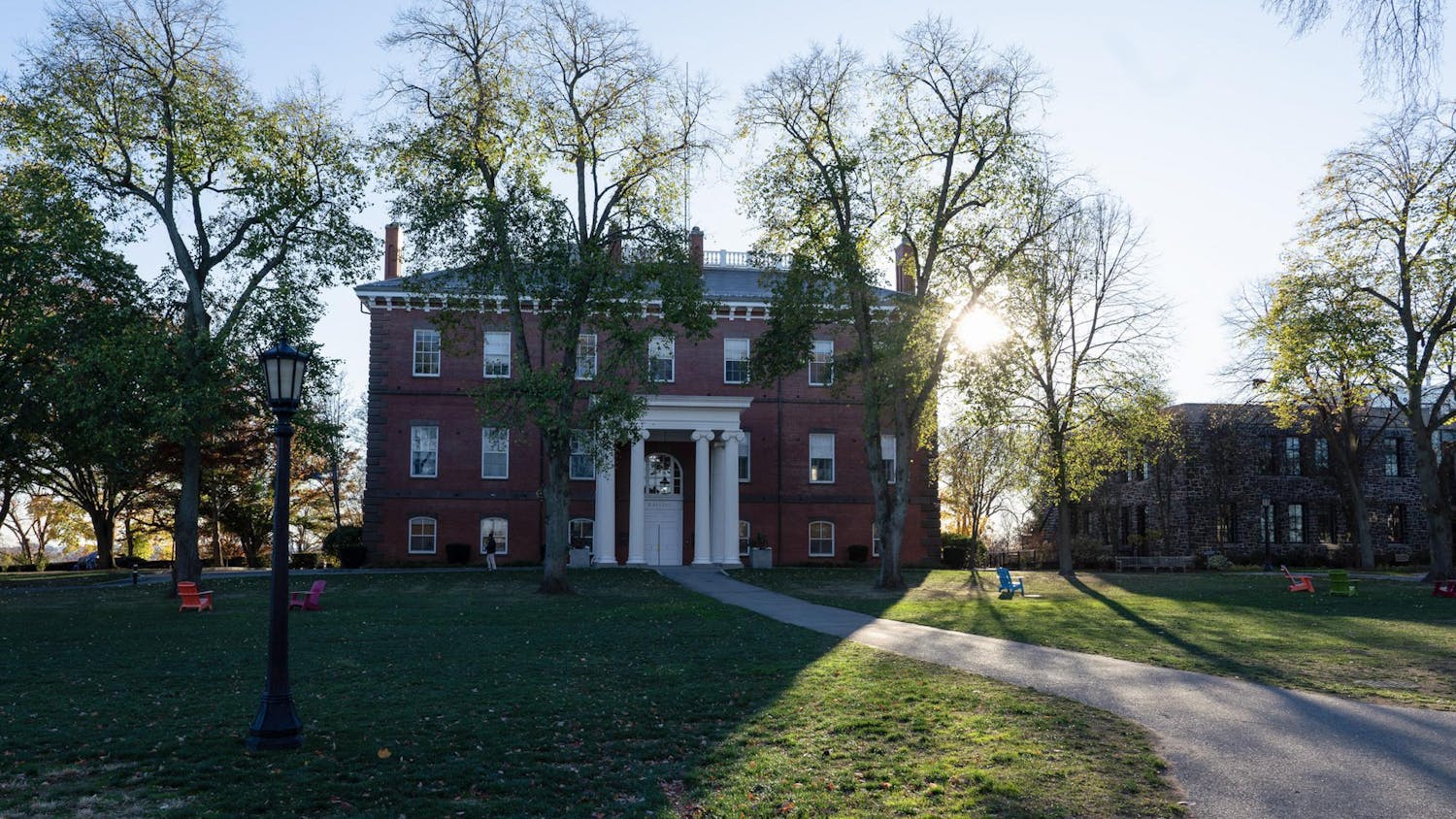President Donald Trump released the first budget proposal of his presidency in March, titled “America First: A Budget Blueprint to Make America Great Again.” The proposal significantly slashes budgets for agencies like the State Department and the Environmental Protection Agency, and cuts off funding entirely for federal agencies that fund arts and public broadcasting.
If Trump's proposed budget is passed by Congress, it would seriously affect funding for all research universities, Tufts School of Medicine Dean Harris Berman told the Daily in an email. Funding for art projects, medical research and research in the humanities at Tufts would all be affected by the proposal.
Berman said that more than 80 percent of funding for research at the Medical School comes from federal sources. Proposed cuts to the National Institutes of Health (NIH) budget would likely mean a slowdown in the pace of research at the Medical School, which is currently conducting research on Alzheimer’s disease, tuberculosis and antibiotic-resistant sexually transmitted diseases, he noted.
“Cuts to NIH funding would make it more difficult for faculty at research institutions such as Tufts to compete for new research funding in an already competitive environment,” Berman said. “These cuts would not only impact biomedical research, but have an impact on the scientific workforce as funds from NIH support the salaries for faculty, postdocs, graduate students and other essential research personnel. This impact would be felt at every research institution across the country.”
On the Medford/Somerville campus, Tufts University Art Gallery would also see consequences if funding for the National Endowment for the Arts (NEA) is eliminated entirely, as Trump's budget proposes. Art Gallery Exhibitions Coordinator Lissa Cramer said that Tufts applies to one or two grants annually from the Massachusetts Cultural Council (MCC), which draws funding directly from the NEA, she said.
While the gallery budget allocated by Tufts is unlikely to change, she said, a cut to the NEA would mean a decrease in a significant source of funding for important projects put on by the gallery.
The billboard that has been standing outside Mayer Campus Center since in 2013 was a project funded by the MCC, she said. Cramer explained that MCC grants allow students to get more involved in the gallery, encourage diversity and allow the gallery to focus on topics they might not have otherwise.
“Normally with the MCC grants there’s a very strong student-teaching aspect,” she said. “We will bring somebody in and the students get to participate. Students don’t get the opportunity to really work in the gallery … so having these MCC grants offered us the ability to provide more student interaction.”
Funding for projects run by professors and opportunities for student research would also be affected by the proposed cuts. Classics Professor and Editor-in-Chief of the Perseus Digital Library Gregory Crane said elimination of funding for the National Endowment for the Humanities (NEH) and the Institute of Museum and Library Services and cuts to the Department of Education will all have consequences for his research.
Perseus Digital Library, a virtual library of openly licensed texts translated to various languages, is dependent on funding from the NEH, he said. Funding allowed Perseus and other projects to create data, hire programmers and provide grants to students, according to Crane.
“We’ve built up a library of openly licensed texts in various languages which people can use for research and for teaching,” he said. “It’s very important these texts are open, that is to say anyone can use them … we couldn’t have done that without having had any support for that and if we don’t have an NEH, we’ll have no support for that.”
However, Crane noted that the currently proposed cuts are not inconsistent with the actions of other presidents, who have made similar cuts on a lower scale. Crane attributed this trend to a lack of support in the United States for research in the humanities.
"Trump has proposed to eliminate funding to the National Endowment for the Humanities and the NEA and the [Institute of Museum and Library Sciences], and that is obviously a catastrophic change from what happened before," he said. "But the U.S. has never provided very generous funding in comparison to Germany and the European Union."
Yet even funding for seemingly bipartisan programs such as medical research would be massively cut, setting Trump apart from many other presidents, Crane said.
“I think a comparison would be the budget proposals for the NIH … everyone wants medical research, and Trump didn’t quite get rid of it but he proposed a 20 percent cut," Crane said. "[His budget is] even against the most bipartisan and obviously useful and valuable kind of research."
Eighteen percent of the Medical School’s funding comes from foundations and industry groups, Berman said. Should the cuts take place, Berman expects faculty to turn to these sources for funding.
Cramer said that the Art Gallery also receives funds from private foundations and donors and would likely seek alternative funding in those areas.
Crane said that support for the humanities is much greater outside the United States and that he has previously sought funding in the European Union. Crane said that, should this proposal pass, he would likely aim most grant proposals at funders in Germany, but he feared this approach would limit options for student participation on campus.
A cut to the NIH would have effects beyond university research, Berman said.
"In addition to saving lives, cuts to the NIH budget would also have drastic effects on the country’s economic growth," Berman said. "NIH funding fuels our innovative life sciences and health sector, an essential part of our economy."
Trump budget proposal to cut research funding at Tufts






